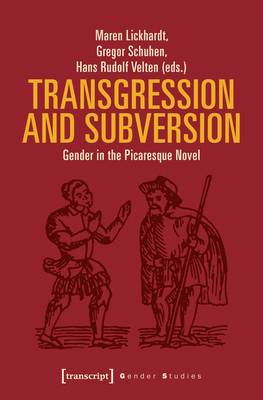
- Afhalen na 1 uur in een winkel met voorraad
- Gratis thuislevering in België vanaf € 30
- Ruim aanbod met 7 miljoen producten
- Afhalen na 1 uur in een winkel met voorraad
- Gratis thuislevering in België vanaf € 30
- Ruim aanbod met 7 miljoen producten
Zoeken
Transgression and Subversion
Gender in the Picaresque Novel
Maren Lickhardt, Gregor Schuhen, Hans Rudolf Velten
€ 59,45
+ 118 punten
Omschrijving
Is the pícaro, the roguish hero of early modern Spanish adventure fiction, a "real man"? What position does he hold in the gender hierarchy of his fictional social context? Why is the pícara so nonfemale? What effect has her gender constitution on her fictional social context? In terms of a gendered subject, the picaresque figure has hardly been analyzed so far. Although scholars have recognized it as a transgressive and subversive model, the queer effect of the figure is yet to be examined. With regard to the categories of class, generation, topography, and gender, the contributions assembled in this volume explore Spanish, French, English, and German novels narratologically from the perspective of culture and gender theories.
Specificaties
Betrokkenen
- Auteur(s):
- Uitgeverij:
Inhoud
- Aantal bladzijden:
- 218
- Taal:
- Engels
- Reeks:
Eigenschappen
- Productcode (EAN):
- 9783837644005
- Verschijningsdatum:
- 27/08/2019
- Uitvoering:
- Paperback
- Formaat:
- Trade paperback (VS)
- Afmetingen:
- 147 mm x 224 mm
- Gewicht:
- 340 g

Alleen bij Standaard Boekhandel
+ 118 punten op je klantenkaart van Standaard Boekhandel
Beoordelingen
We publiceren alleen reviews die voldoen aan de voorwaarden voor reviews. Bekijk onze voorwaarden voor reviews.








